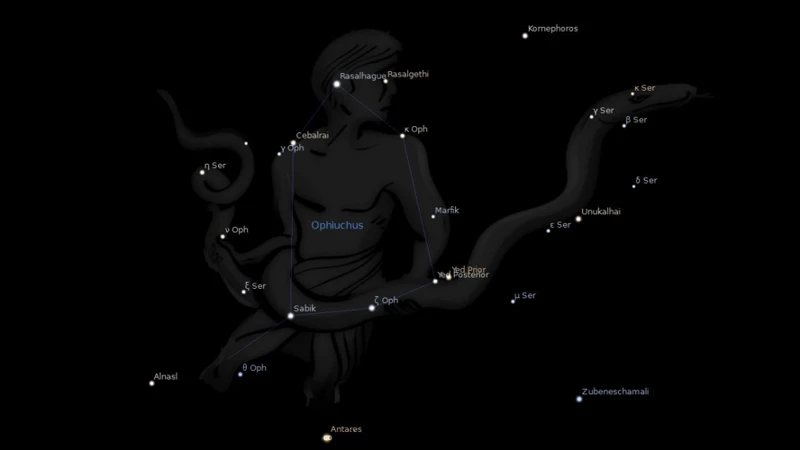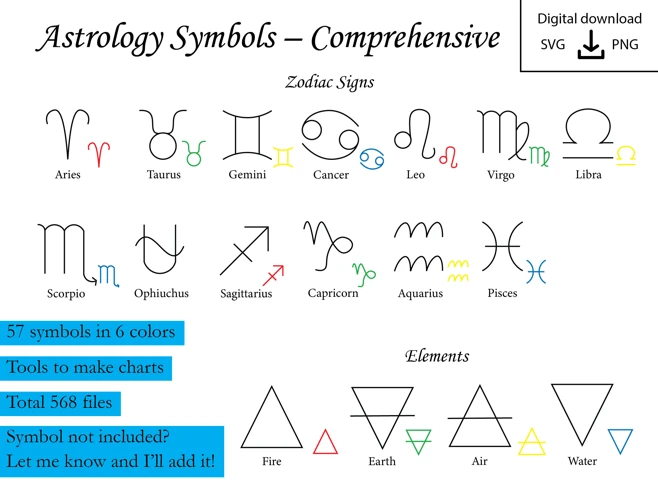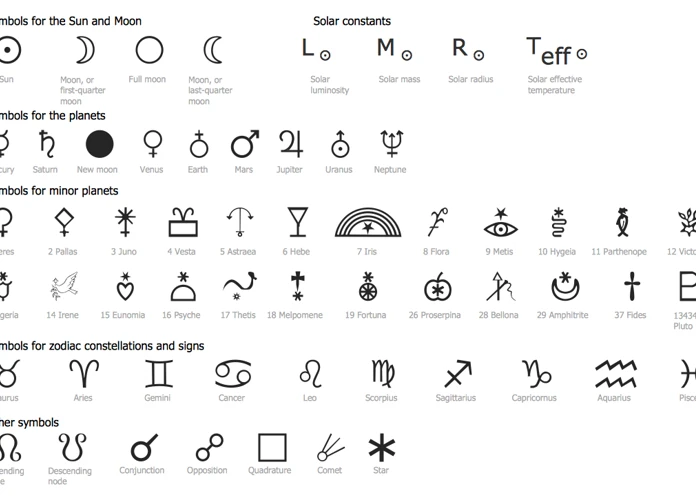Astrology, an ancient practice that has fascinated humanity for centuries, unveils a mystical connection between celestial bodies and human life. At the heart of astrology are the planetary symbols, powerful representations of the heavenly bodies that shape our existence. These symbols, steeped in history and imbued with deep meaning, possess the ability to unlock the secrets of our personalities, relationships, and life paths. In this article, we will delve into the role of planetary symbols in astrological readings, exploring their significance and decoding their messages. Join us on this cosmic journey as we unravel the mysteries of the planetary symbols and discover how they influence our lives.
Contents
- Understanding Planetary Symbols
-
The Role of Planetary Symbols in Astrological Readings
- Interpreting the Sun Symbol
- Decoding the Moon Symbol
- The Power of the Mercury Symbol
- Astrological Insights from the Venus Symbol
- Exploring the Mars Symbol in Astrology
- Unraveling the Jupiter Symbol
- Understanding the Saturn Symbol in Astrology
- Diving into the Uranus Symbol
- The Neptunian Symbol and Its Significance
- The Transformative Power of the Pluto Symbol
- Conclusion
-
Frequently Asked Questions
- What are planetary symbols in astrology?
- What is the history and meaning of planetary symbols?
- How do planetary symbols impact astrological charts?
- What does the Sun symbol represent in astrology?
- What does the Moon symbol signify in astrology?
- What is the significance of the Mercury symbol in astrology?
- What astrological insights can we gain from the Venus symbol?
- What does the Mars symbol signify in astrology?
- What can we learn from the Jupiter symbol in astrology?
- What does the Saturn symbol signify in astrology?
- References
-
Frequently Asked Questions
- What are planetary symbols in astrology?
- How were planetary symbols created?
- Do planetary symbols have different meanings in different cultures?
- Why are planetary symbols important in astrological charts?
- What does the Sun symbol represent in astrology?
- What is the significance of the Moon symbol in astrology?
- What does the Mercury symbol signify in astrology?
- What insights can be gained from the Venus symbol in astrology?
- How does the Mars symbol influence astrological readings?
- What is the significance of the Pluto symbol in astrology?
- References
- Read More
Understanding Planetary Symbols

When it comes to astrology, understanding planetary symbols is crucial for deciphering the intricacies of astrological readings. These symbols serve as a visual language, conveying hidden meanings and connecting us to the celestial forces at play. The history and meaning behind each planetary symbol are deeply rooted in ancient wisdom and cultural beliefs. For instance, the symbol for the Sun represents vitality, the core of our being, and life force. Similarly, the symbol for the Moon represents our emotions, intuition, and the divine feminine. The symbolism of each planet extends beyond its visual representation, delving into mythology and cosmic energies. For example, the Mars symbol is associated with passion, assertiveness, and warfare, reflecting the qualities of the Roman god of war. Each planetary symbol holds a unique resonance and influences different aspects of our lives. By understanding these symbols, we gain profound insights into ourselves and the world around us.
The History and Meaning of Planetary Symbols
The history and meaning of planetary symbols in astrology can be traced back to ancient civilizations and their beliefs about the celestial bodies. The symbols themselves, often stylized representations of the planets, hold significant cultural and mythological importance. These symbols are derived from a variety of sources, including ancient Greek and Roman mythology, as well as religious and cultural symbolism from around the world. For example, the symbol for the Sun (☉) is often depicted as a circle with a dot in the center, representing the radiant energy and life-giving force associated with this celestial body. The symbol for the Moon (☽), on the other hand, resembles a crescent shape and represents the ever-changing cycles of emotions and intuition. Mercury’s symbol (☿), resembling the caduceus, symbolizes communication, commerce, and the swift movements of the messenger of the gods. Venus’s symbol (♀), resembling a circular mirror or the hand mirror of the goddess of love and beauty, signifies femininity, love, and relationships. Mars’s symbol (♂), reminiscent of a shield and spear, is associated with passion, energy, and assertiveness. Jupiter’s symbol (♃), resembling the letter “z” with a line across it, represents expansion, abundance, and wisdom. Saturn’s symbol (♄), reminiscent of the sickle of the god Cronus, represents structure, discipline, and limitations. Uranus’s symbol (♅), a combination of the Sun and Mars symbols, signifies innovation, rebellion, and unconventional thinking. Neptune’s symbol (♆), resembling the trident of the god Poseidon, represents spirituality, dreams, and illusions. Finally, Pluto’s symbol (♇), combining the letters “P” and “L” from its discoverer’s initials (Percival Lowell), represents transformation, power, and regeneration. These symbols, steeped in history and mythology, bring depth and meaning to astrological readings, providing insights into the energies and influences of each planetary force. By understanding the history and meaning of planetary symbols, astrologers can unlock a wealth of wisdom and guidance for those seeking to navigate their lives in harmony with the cosmic energies.
The Impact of Planetary Symbols in Astrological Charts
The impact of planetary symbols in astrological charts is profound, as these symbols act as key indicators of cosmic energy and influence. When interpreting an astrological chart, the placement of planetary symbols within the different houses and signs can provide valuable insights into an individual’s personality traits, strengths, challenges, and life experiences. For example, the placement of the Sun symbol in a chart reveals the core essence and purpose of the individual, representing their ego, creativity, and self-expression. The Moon symbol, on the other hand, signifies emotions, instincts, and nurturing qualities, shedding light on one’s emotional needs and inner world. Each planetary symbol carries its own unique energy and qualities, influencing the corresponding aspects of an individual’s life.
The significance of planetary symbols is greatly amplified when considering their relationships and aspects to each other. For instance, the positioning of Mercury symbol in relation to other planets can indicate communication style, intellectual strengths, and thought processes. The Venus symbol reveals information about love, relationships, beauty, and artistic inclinations, while the Mars symbol signifies passion, assertiveness, and drive. These planetary symbols, combined with the symbolism of the zodiac signs and astrological houses, create a complex tapestry of influences that shape a person’s life trajectory.
The impact of planetary symbols extends beyond the individual level. These symbols are interconnected with collective energies and broader societal themes. The movements and alignments of planets, as represented by their symbols, can shed light on global events, cultural trends, and collective consciousness. For example, the conjunction of Saturn and Pluto symbols in recent years has been associated with profound shifts in political and social structures, reflecting a time of transformation and reorganization on a global scale.
Planetary symbols in astrological charts carry significant weight and influence. They provide valuable insights into an individual’s unique psyche, life path, and relationships. Understanding the impact of these symbols within the context of the zodiac signs, astrological houses, and their relationships to one another allows for a deeper understanding of the complexities of human existence and the cosmic forces at play. As we continue to explore the deeper meanings of these symbols, we unlock a wealth of wisdom that can guide us on our journey of self-discovery and personal growth.
The Role of Planetary Symbols in Astrological Readings

The role of planetary symbols in astrological readings is paramount in uncovering the intricate patterns and influences that shape our lives. Each planet symbolizes unique energies and qualities that are reflected in our personalities, relationships, and life experiences. By analyzing the position of these symbols in an astrological chart, astrologers can gain valuable insights into an individual’s strengths, challenges, and life purpose. For example, the Sun symbol represents our core essence, ego, and self-expression, while the Moon symbol relates to our emotions, instincts, and nurturing abilities. Additionally, symbols such as Mercury, Venus, Mars, Jupiter, Saturn, Uranus, Neptune, and Pluto each hold distinct significance, offering further layers of interpretation in an astrological reading. Understanding the interplay between these planetary symbols and their placements within the astrological houses and zodiac constellations provides a comprehensive understanding of an individual’s unique cosmic blueprint. By harnessing the wisdom embedded in these symbols, astrologers can guide individuals towards self-awareness, personal growth, and alignment with their life’s purpose.
Interpreting the Sun Symbol
Interpreting the Sun Symbol:
In astrology, the Sun symbol represents the core essence of an individual’s identity and self-expression. It is the center of our being, radiating warmth, vitality, and life force. The symbol for the Sun resembles a circle with a dot in the center, representing the radiant energy it emits. When analyzing a birth chart, the position of the Sun symbol provides valuable insights into a person’s character, motivations, and aspirations. It reveals their inherent qualities, strengths, and areas of focus in life. The Sun symbol also represents the masculine principle, representing the active, assertive, and outwardly-driven aspects of our personality. As the ruler of the zodiac sign Leo, the Sun symbolizes leadership, creativity, and a passion for self-expression. Its placement in different astrological houses further refines its influence on various areas of life, such as career, relationships, and personal growth. Understanding the Sun symbol enables astrologers to uncover an individual’s intrinsic nature and guide them towards embracing their true potential. By harnessing the energy of the Sun symbol, individuals can shine brightly and pursue their life purpose with confidence and authenticity. To explore how the symbolism of the Sun intertwines with Celtic mythology and influences astrology, consider the mystical connection between these realms through this link.
Decoding the Moon Symbol
When it comes to astrology, the Moon symbol holds a significant place in astrological readings. The Moon symbol represents our emotions, intuition, and subconscious mind. It reflects the divine feminine energy and our nurturing instincts. In astrology, the Moon signifies our emotional well-being and how we respond to and process our feelings. The Moon’s symbol resembles a crescent shape, which is often associated with femininity, mystery, and the cycles of life. This symbol also echoes the phases of the Moon, representing growth, transformation, and the ebb and flow of our emotions. When interpreting the Moon symbol in an astrological chart, astrologers look at its placement and aspects to other planets, as well as its relationship to the astrological houses. The Moon symbol’s position in a specific house can provide insights into the areas of life where we feel the most emotionally connected and fulfilled. Its aspects to other planets shed light on how our emotions interact with different areas of our lives, such as relationships, career, and personal growth. Understanding the Moon symbol and its significance in astrology allows us to uncover the layers of our emotional landscape and navigate the complexities of our inner world.
The Power of the Mercury Symbol
The power of the Mercury symbol in astrology is captivating and multifaceted. Represented by a circle sitting atop a crescent, the Mercury symbol embodies agility, intellect, and communication. Mercury, known as the Roman god of communication and messenger of the gods, influences our thoughts, ideas, and modes of expression. This planet symbolizes our capacity for learning, logic, and social interaction. Individuals with a strong Mercury placement in their birth chart often possess excellent communication skills, a quick wit, and the ability to adapt to various situations effortlessly.
In astrological readings, the Mercury symbol provides valuable insights into how we process information, communicate with others, and perceive the world around us. It illuminates our learning style, shape our thought processes, and influences our ability to convey ideas effectively. Additionally, the position of Mercury within our birth chart reveals how we absorb knowledge, whether it be through analytical thinking, creative expression, or practical learning.
Understanding the power of the Mercury symbol can be beneficial in various aspects of life. For example, it can help us navigate career choices that align with our natural talents in communication and negotiation. Additionally, it aids in developing effective communication strategies within relationships and enhances our ability to express ourselves clearly and concisely. By embracing the lessons of Mercury, we can tap into our intellectual prowess and harness the power of effective communication to achieve success in our personal and professional endeavors.
Astrological Insights from the Venus Symbol
Astrological Insights from the Venus Symbol:
The Venus symbol, often referred to as the feminine symbol, holds a significant role in astrology, representing beauty, love, relationships, harmony, and all things related to pleasure and indulgence. In astrological readings, the placement of Venus in the birth chart provides valuable insights into an individual’s approach to love, romance, and their aesthetic preferences.
When Venus is prominently placed in the birth chart, it indicates a person who values beauty, sensuality, and the finer things in life. They possess a charming and magnetic personality that attracts others effortlessly. People with a strong Venus influence tend to appreciate art, music, and luxurious surroundings. They have a great appreciation for aesthetics and are often drawn to careers in creative fields, fashion, or design.
Additionally, Venus symbolizes love and relationships, highlighting our romantic inclinations and desires. The position of Venus in the birth chart can indicate the type of partner we are attracted to and the qualities we seek in a relationship. A harmonious Venus placement suggests an individual who values peace and cooperation in their partnerships, striving for balance and intimacy. On the other hand, challenging aspects to Venus may indicate difficulties in relationships, issues with self-worth, or a tendency to seek validation through shallow means.
Understanding the astrological insights from the Venus symbol allows us to gain a deeper understanding of our personal relationships, values, and aesthetic inclinations. By exploring the placement of Venus in our birth charts, we can navigate matters of the heart and harness the harmonious energy this planet represents. Whether it’s expressing love, embracing beauty, or finding balance in our partnerships, the Venus symbol guides us towards a life of love, pleasure, and aesthetic fulfillment.
Click here to learn more about the significance of astrological houses, or here to discover the mythical origins of the zodiac constellations.
Exploring the Mars Symbol in Astrology
In astrology, exploring the Mars symbol is a fascinating endeavor that unveils the powerful energy and assertive nature associated with this planet. Represented by a circle with an arrow pointing upwards and to the right, the Mars symbol embodies qualities such as passion, ambition, and determination. Mars is often referred to as the “action planet” and is associated with desires, drive, and physical energy. In astrology, the Mars symbol signifies our motivations, how we assert ourselves, and our approach to challenges and conflict. Its placement in our birth chart indicates where we channel our energies and how we pursue our goals. Those with a prominent Mars placement may showcase traits such as courage, assertiveness, and competitiveness. However, it is important to note that Mars can also represent aggression and impulsive behavior. Understanding the Mars symbol in astrology helps us navigate our desires and assertiveness in a balanced and constructive manner. By harnessing the energy of Mars, we can embrace our passions, take action towards our dreams, and cultivate a strong sense of self-confidence.
Unraveling the Jupiter Symbol
The Jupiter symbol in astrology represents expansion, growth, and abundance. It embodies the energy of Jupiter, the largest planet in our solar system, known as the planet of luck and expansion. The symbol itself resembles a number 4 with a horizontal line at the top, which is said to represent the crescent of the soul rising above the cross of matter. This symbol holds significant meaning when interpreting astrological charts and readings.
Jupiter, often referred to as the “Great Benefic,” brings optimism, prosperity, and good fortune into our lives. Its influence can be seen in areas such as wealth, career success, and spiritual growth. Individuals with a strong Jupiter placement in their charts are often blessed with opportunities and the ability to attract abundance.
In astrology, the Jupiter symbol is also associated with generosity, wisdom, and higher knowledge. It encourages us to explore new horizons, expand our awareness, and seek truth and meaning in our lives. Jupiter’s influence can inspire us to take risks, embrace personal growth, and venture into new territories.
When analyzing the position of Jupiter in an astrological chart, astrologers consider its house placement and aspects to other planets. The house placement indicates the areas of life that will be influenced by Jupiter’s energy. For example, Jupiter in the 2nd house may bring financial abundance, while Jupiter in the 9th house can signify spiritual growth and opportunities for higher education or travel.
The aspects formed by Jupiter with other planets provide additional insights into how its energy interacts with different areas of our lives. Harmonious aspects, such as trines or sextiles, indicate ease and flow in utilizing Jupiter’s gifts. Challenging aspects, such as squares or oppositions, may suggest the need to overcome obstacles or temper excessive indulgence.
Understanding the symbolism and influence of Jupiter in astrological readings allows us to harness its expansive energy and tap into the opportunities it brings. It reminds us to embrace optimism, seek personal growth, and trust in the abundance that the universe has to offer. With Jupiter’s guidance, we can navigate life’s journey with a sense of grace and abundance.
Understanding the Saturn Symbol in Astrology
Saturn, the sixth planet from the Sun, holds great significance in astrology and its symbol represents the complex nature of this celestial body. The Saturn symbol, ♄, resembles a cross with a curve at the bottom, partially resembling a sickle or scythe. This symbol encapsulates the essence of Saturn’s energy, which is often associated with discipline, responsibility, and the limitations and challenges of life. In astrology, Saturn is known as the taskmaster, representing the lessons and tests we encounter throughout our lives. Its symbol is a reminder of the need for structure, patience, and perseverance in the face of adversity. The influence of Saturn brings a sobering energy that urges us to confront our fears, take responsibility for our actions, and work diligently towards our goals. It also teaches us valuable lessons about time, boundaries, and the rewards that come with hard work and determination. Understanding the symbolism of Saturn allows us to gain deeper insights into the areas of life where we may face difficulties and obstacles. It prompts us to reevaluate our priorities, establish a solid foundation, and embrace the wisdom that comes with navigating life’s challenges. Saturn’s symbol serves as a reminder that through discipline and perseverance, we can overcome obstacles and ultimately experience personal growth and accomplishment in the areas governed by Saturn’s influence.
Diving into the Uranus Symbol
Diving into the Uranus symbol takes us on a cosmic journey of innovation, independence, and revolution. Represented by a circle with a cross placed above it, the Uranus symbol carries profound astrological significance. The circle signifies the divine spirit and the infinite, while the cross represents matter and manifestation. Together, they embody the fusion of spiritual enlightenment and tangible transformation that Uranus bestows upon us. Astrologically, Uranus is known as the planet of change and unpredictability, influencing our thinking, behaviors, and societal structures. Its symbol serves as a reminder to embrace individuality, break free from conformity, and tap into our unique genius. Uranus challenges us to awaken our inner rebel, facilitating groundbreaking discoveries and progressive ideologies. In astrological readings, the presence of Uranus symbolizes the need for liberation, innovation, and embracing the unconventional. Its energy encourages us to question the status quo, disrupt stagnant patterns, and pave the way for a future that is both innovative and empowering. Diving into the Uranus symbol allows us to unravel the mysteries of its transformative energy and embrace the liberating power it holds.
The Neptunian Symbol and Its Significance
The Neptunian Symbol, also known as the symbol for Neptune, holds great significance in astrology. Represented by a trident, this mystical symbol embodies the energy of Neptune, the planet associated with dreams, illusions, and spirituality. In astrological readings, the Neptunian Symbol signifies the realm of the subconscious and the boundless depths of our imagination. It is linked to our intuition, creativity, and spiritual connection to the universe. Neptune’s energy is ethereal and transcendent, often guiding us towards compassion, empathy, and a heightened sense of spirituality. This symbol encourages us to explore the unseen realms of our consciousness and embrace the magic of the unknown. When this symbol appears in a birth chart or astrological reading, it indicates a person with a deep sensitivity, an artistic soul, and a profound longing for spiritual fulfillment. Those influenced by the Neptunian Symbol may possess heightened psychic abilities and a natural inclination towards mysticism. However, it is essential to navigate the Neptunian energies with caution, as they can also manifest as illusions, delusions, and escapism if not approached with awareness and discernment. The Neptunian Symbol reminds us to tap into our intuition, trust our inner guidance, and explore the enchanting realms beyond the physical realm. Embracing the Neptunian energy can lead to spiritual growth, artistic expression, and a deeper understanding of the interconnectedness of all things.
The Transformative Power of the Pluto Symbol
The Pluto symbol in astrology holds immense transformative power, symbolizing the forces of death, rebirth, and regeneration. Represented by a circle that’s bisected by a horizontal line and topped with a descending arc, Pluto’s symbol reflects its deep influence on our lives. This distant celestial body is associated with profound transformations, both on an individual and collective level. In astrological readings, the presence of the Pluto symbol indicates the need for letting go of old patterns and embracing personal growth. Pluto’s energy can be intense and challenging, as it brings buried emotions to the surface, forcing us to confront our deepest fears and desires. It represents the process of shedding our old selves, releasing what no longer serves us, and emerging stronger and wiser. The Pluto symbol is also associated with themes of power, control, and hidden truths. Its placement in an astrological chart offers insights into how we navigate through life’s inevitable transformations and ultimately, how we can tap into our own inner power to create positive change. Embracing the transformative power of the Pluto symbol allows us to undergo profound personal evolution and emerge as our true, authentic selves.
Conclusion

In conclusion, the role of planetary symbols in astrological readings is profound and multi-faceted. These symbols serve as gateways to the cosmic forces that shape our lives, allowing astrologers to tap into a deeper understanding of our personalities, relationships, and life paths. From the Sun symbol representing our vitality and life force to the transformative power of the Pluto symbol, each planetary symbol holds valuable insights that can guide us on our journey of self-discovery and growth. It is through the interpretation and decoding of these symbols that astrologers weave together a rich tapestry of meaning, helping individuals navigate both the challenges and opportunities that life presents. By embracing the wisdom of planetary symbols, we can gain a greater appreciation for the interconnectedness of the universe and our place within it. So, as you embark on your astrological journey, remember to pay attention to the intricate language of planetary symbols and unlock the hidden messages they hold. Let these symbols be your guide as you explore the depths of astrology and embrace the cosmic dance of the planets.
Frequently Asked Questions

What are planetary symbols in astrology?
Planetary symbols in astrology are visual representations of the different celestial bodies in the solar system. Each symbol corresponds to a specific planet, such as the Sun, Moon, Mercury, Venus, Mars, Jupiter, Saturn, Uranus, Neptune, and Pluto.
What is the history and meaning of planetary symbols?
The history of planetary symbols dates back to ancient times when they were used as a way to communicate and depict the celestial bodies. The meaning behind each symbol derives from mythology, cultural beliefs, and the qualities associated with the respective planets they represent.
How do planetary symbols impact astrological charts?
Planetary symbols play a significant role in astrological charts as they help astrologers identify the positions and relationships between the planets at the time of an individual’s birth. These symbols provide insights into a person’s personality traits, life path, and potential challenges or opportunities.
What does the Sun symbol represent in astrology?
The Sun symbol in astrology represents vitality, self-expression, creativity, and the core essence of an individual. It signifies one’s ego, identity, and life force.
What does the Moon symbol signify in astrology?
The Moon symbol in astrology signifies our emotions, intuition, instincts, subconscious mind, and feminine energy. It reflects our inner world, emotions, and how we nurture ourselves and others.
What is the significance of the Mercury symbol in astrology?
The Mercury symbol in astrology represents communication, intellect, learning, and adaptability. It influences how we think, process information, and exchange ideas with others.
What astrological insights can we gain from the Venus symbol?
The Venus symbol in astrology represents love, beauty, relationships, harmony, and our approach to romantic connections. It provides insights into our values, attractions, and pleasures.
What does the Mars symbol signify in astrology?
The Mars symbol in astrology represents energy, action, passion, courage, and assertiveness. It influences our drive, ambition, and how we express our desires and take initiative.
What can we learn from the Jupiter symbol in astrology?
The Jupiter symbol in astrology represents expansion, growth, abundance, wisdom, and luck. It offers insights into our beliefs, values, opportunities, and areas where we can experience personal and professional growth.
What does the Saturn symbol signify in astrology?
The Saturn symbol in astrology represents discipline, responsibility, structure, limitations, and life lessons. It indicates areas where we face challenges, learn important life lessons, and build resilience.
References
- In Astrology, Each Planet Has Symbols and Meanings
- Astrology Symbols and Their Meanings
- Astrological symbols
Frequently Asked Questions

What are planetary symbols in astrology?
Planetary symbols in astrology are graphic representations used to identify and represent the different planets in the solar system. These symbols hold deep meaning and significance in astrological readings.
How were planetary symbols created?
The creation of planetary symbols dates back to ancient times. They were developed through a combination of mythology, celestial observations, and cultural influences. Each symbol was designed to capture the essence and energy of a specific planet.
Do planetary symbols have different meanings in different cultures?
While the basic meanings of planetary symbols remain consistent across cultures, there can be slight variations in interpretation. Different cultures may incorporate their own beliefs and associations into the understanding of planetary symbols.
Why are planetary symbols important in astrological charts?
Planetary symbols serve as vital components of astrological charts. They provide astrologers with a visual representation of the planets’ positions and create a language for understanding and interpreting planetary influences on an individual’s life.
What does the Sun symbol represent in astrology?
The Sun symbol represents vitality, self-expression, and the core essence of an individual’s personality. It embodies qualities such as identity, confidence, and ambition.
What is the significance of the Moon symbol in astrology?
The Moon symbol in astrology represents emotions, intuition, and the subconscious mind. It reflects a person’s inner world, their emotional needs, and their nurturing nature.
What does the Mercury symbol signify in astrology?
The Mercury symbol is associated with communication, intellect, and the mind. It represents the way in which individuals think, process information, and express themselves verbally.
What insights can be gained from the Venus symbol in astrology?
The Venus symbol in astrology represents love, beauty, and relationships. It provides insights into a person’s romantic tendencies, their values, and their approach to harmony and aesthetics.
How does the Mars symbol influence astrological readings?
The Mars symbol in astrology represents action, energy, and aggression. It provides information about a person’s drive, passion, and assertiveness in various areas of life, including work and relationships.
What is the significance of the Pluto symbol in astrology?
The Pluto symbol holds transformative power in astrology. It represents deep inner change, regeneration, and the process of letting go. It offers insights into a person’s ability to undergo profound personal growth and transformation.







